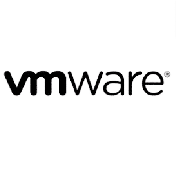Seminarinhalt
In diesem Training erfahren IT-Expert*innen, wie sie zentrale Windows Server-Workloads und -Dienste mithilfe lokaler, hybrider und cloudbasierter Technologien verwalten. In diesem Training erfahren IT-Expert*innen, wie sie lokale und hybride Lösungen (etwa in den Bereichen Identität, Verwaltung, Rechenleistung, Netzwerk und Speicher) in einer Windows Server-Hybridumgebung implementieren und verwalten.
Programm
- Deploy and manage identity Infrastructure
- Introduction to AD DS
- Introduction
- Define AD DS
- Define users, groups, and computers
- Define AD DS forests and domains
- Define OUs
- Manage objects and their properties in AD DS
- Perform Windows Server secure administration
- Describe Window Server administration tools
- Perform post-installation configuration of Windows Server
- Administer and manage Windows Server IaaS Virtual Machine remotely
- Manage hybrid workloads with Azure Arc
- Optimizing IT operations and management with Azure Automanage
- Just enough Admininstraiton in Windows Server
Manage virtualization and containers in a hybrid environment
- Configure and manage Hyper-V
- Configure and manage Hyper-V virutal machines
- Secure Hyper-V workloads
- Pland and deploy Windows Server Iaas Virtual Machines
- Customize Windows Server iaas Virtual Machine image
- Automate the configuration of Windows Server Iaas Virtual Machines
- Run containers on Windows Server
- Orchestrate containers on Windows Server using Kubernetes
Implement and operate an on-premises and hybrid networking infrastructure
- Implement DNS for Windows Server IaaS VMs
- Deploy and manage DHCP
- Implement Windows Server DNS
- Implement IP Address Management
- Impleement remote access
- Implement hybrid network infrastructure
- Implement Windows Server IaaS VM IP addressing and routing
Configure storage and file services
- Manage Windows Server file servers
- Implement Storage Spaces and Storage Spaces Direct
- Implement Windows Server Data Deduplication
- Implement Windows Server iSCSI
- Implement Windows Server Storage Replica
- Implement a hybrid file server infrastructure
Zielgruppen
Dieses viertägige Training richtet sich an Windows Server-Hybridad
Windows Server-Hybridadministrators implementieren und verwalten lokale und hybride Lösungen (etwa in den Bereichen Identität, Verwaltung, Compute, Netzwerk und Speicher) in einer Windows Server-Hybridumgebung.
- Introduction to AD DS
- Introduction
- Define AD DS
- Define users, groups, and computers
- Define AD DS forests and domains
- Define OUs
- Manage objects and their properties in AD DS
Windows Server-Hybridadministrators implementieren und verwalten lokale und hybride Lösungen (etwa in den Bereichen Identität, Verwaltung, Compute, Netzwerk und Speicher) in einer Windows Server-Hybridumgebung.
Vorkenntnisse
- Erfahrung mit der Verwaltung von Windows Server-Betriebssystemen und Windows Server-Workloads in lokalen Szenarios, einschließlich AD DS, DNS, DFS, Hyper-V und Datei-/Speicherdiensten
- Erfahrung mit allgemeinen Windows Server-Verwaltungstools (impliziert in der ersten Voraussetzung)
- Grundlegende Kenntnisse der zentralen Compute-, Speicher-, Netzwerk- und Virtualisierungstechnologien von Microsoft (impliziert in der ersten Voraussetzung)
- Erfahrung und Kenntnisse der wichtigsten Netzwerktechnologien wie IP-Adressierung, Namensauflösung und Dynamic Host Configuration Protocol (DHCP)
- Erfahrung im Umgang mit und Kenntnisse zu Microsoft Hyper-V und grundlegenden Servervirtualisierungskonzepten
- Grundlegende Kenntnisse zur Implementierung und Verwaltung von IaaS-Diensten in Microsoft Azure
- Grundlegende Kenntnisse im Umgang mit Azure Active Directory
- Praktische Erfahrung im Umgang mit Windows-Clientbetriebssystemen wie Windows 10 oder Windows 11
- Grundlegende Erfahrung mit Windows PowerShell
Trainings zur Vorbereitung
Bestandteil von
Wichtige Information
Dieses Training behandelt prüfungsrelevante Themen zum Examens AZ-800 Administering Windows Server Hybrid Core Infrastructure.



Sehr guter Trainer!!! Ressourcen in den Azure Laps haben öfter etwas länger benötigt bis diese Verfügbar waren. Interessante Themen leider nur 4 Tage.
Administer Windows Server Hybrid Core Infrastructure
30.05.2023Sehr guter Trainer!!! Ressourcen in den Azure Laps haben öfter etwas länger benötigt bis diese Verfügbar waren. Interessante Themen leider nur 4 Tage.
— Martin M.War ein super Kurs.
Administer Windows Server Hybrid Core Infrastructure
05.10.2022War ein super Kurs.
— Christian W.Optimale Kombination von On-Premises Windows Server Technologie mit den Microsoft Azure Diensten
Administer Windows Server Hybrid Core Infrastructure
25.05.2022Optimale Kombination von On-Premises Windows Server Technologie mit den Microsoft Azure Diensten
— Florian S.